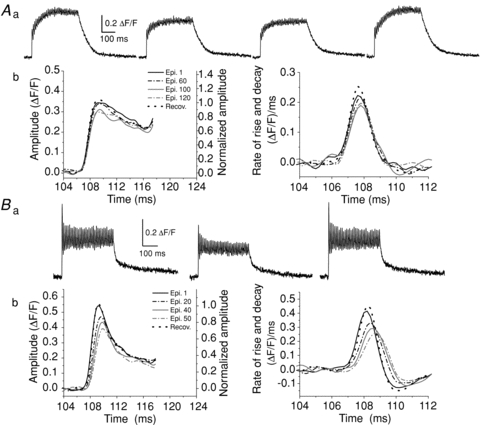Figure 2. Fatigue-induced kinetic alterations in the first peak of the tetanic Ca2+ transients in a MT-I (A) and a MT-II (B) fibre loaded with Magfluo-4 AM.

In Aa the episodes (epi) number 1, 60 and 120 and recovery (recov) are shown. The decrease in the amplitude of the first peak of the tetanic Ca2+ transients obtained in a MT-I fibre (A) started after 80 tetani and amounted to 13% after 120 tetani, as shown in Ab, on the left. This change was accompanied by a 18% decrease in the maximum rate of rise as shown by the first derivative of the respective records, as shown in Ab, on the right. In Ba, the Ca2+ transients number 1, 50 and the recovery in a MT-II fibre are shown. In this fibre the decrease in the amplitude of the first peak of the tetanic transients was of 28% after 50 tetani (Bb, left) and the maximum rate of rise diminished by 38%, as shown by the first derivative of the respective records (Bb, right). All changes fully recovered after 13 and 3 min for the MT-I and the MT-II fibres, respectively.
